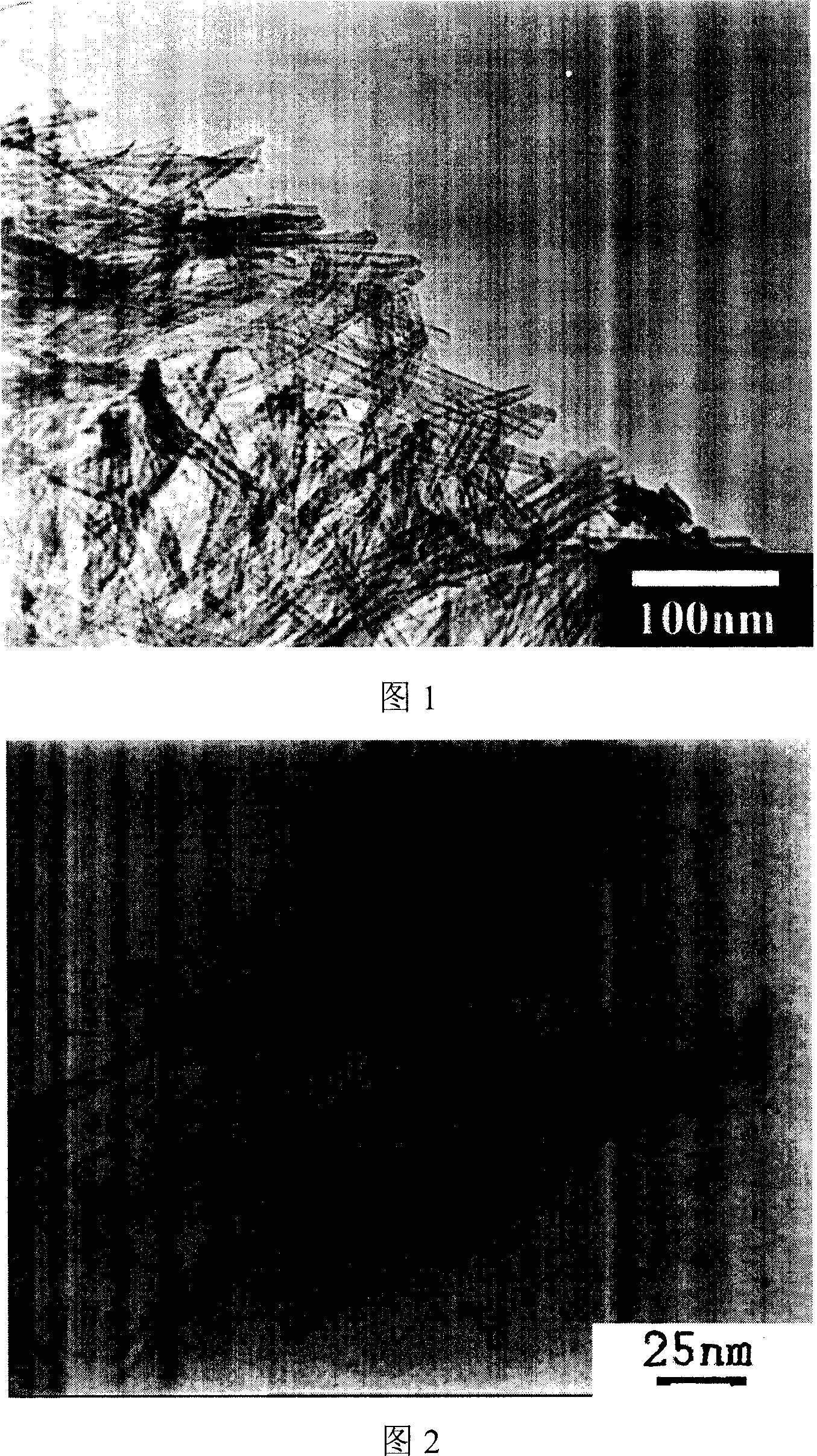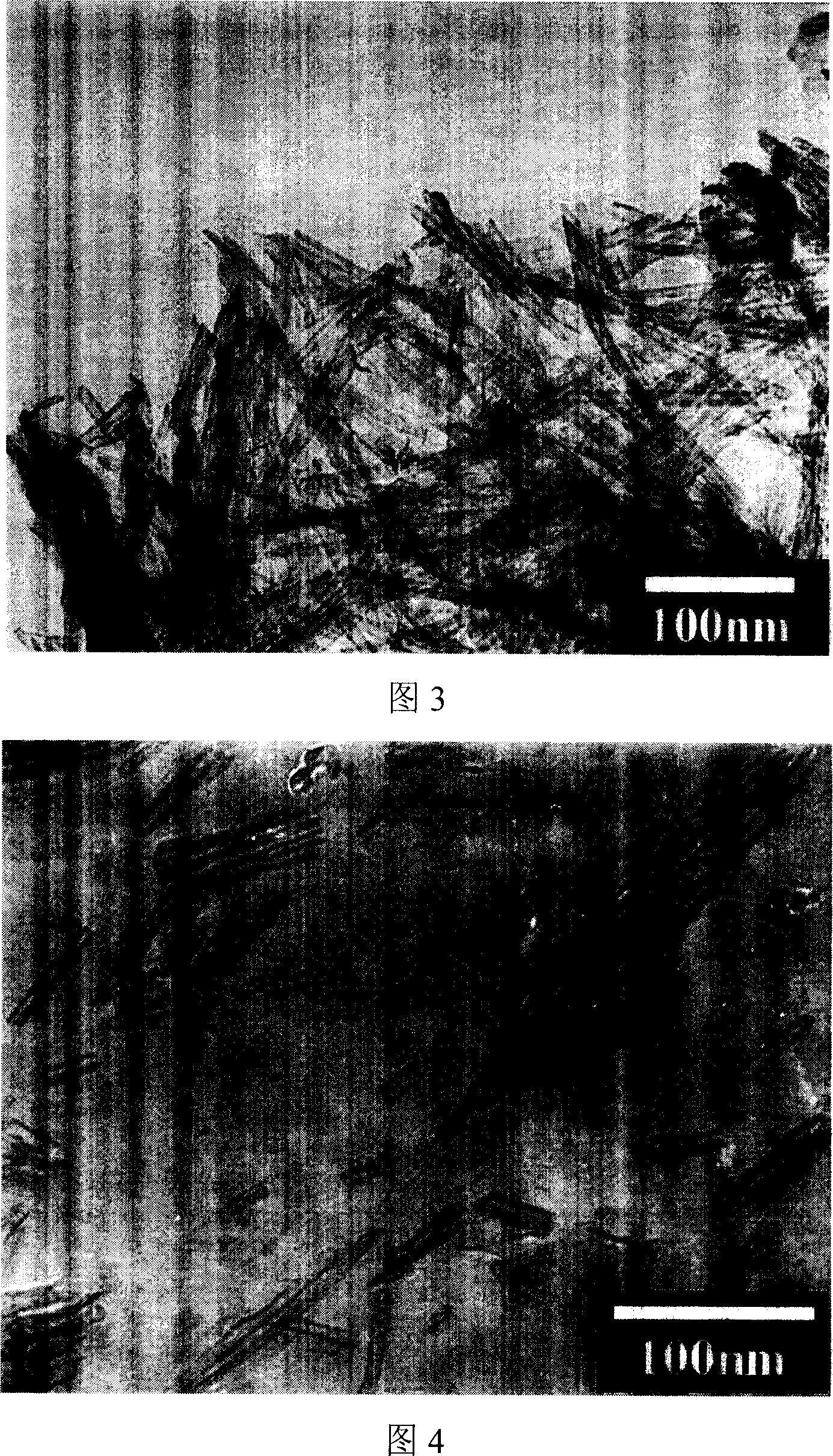Method for preparing Nano tube of titanate
A technology of nanotubes and titanates, applied in the field of titanates, to achieve the effects of increased specific surface area, cheap raw materials, and improved performance
- Summary
- Abstract
- Description
- Claims
- Application Information
AI Technical Summary
Problems solved by technology
Method used
Image
Examples
Embodiment 1
[0019] Embodiment 1, get 3g TiO 2 Slowly add anatase into a polytetrafluoroethylene container filled with 150ml of 10M NaOH aqueous solution, control the temperature at 120°C, stir and add a reflux condenser, and react for 24h. After 24 hours, the reacted mixture was cooled and settled, and washed until the pH value was about 12, filtered and dried to obtain the precursor nanotube sodium titanate.
[0020] Lithium nitrate crystals and dry precursor nanotube sodium titanate are uniformly mixed at a lithium-sodium molar ratio of 10:1, and the mixture is allowed to react at 260°C for 3 hours, cooled to room temperature, washed, and dried to obtain nanotube titanate lithium.
Embodiment 2
[0021] Embodiment 2, get 3g TiO 2 Slowly add anatase into a polytetrafluoroethylene container filled with 150ml of 10M NaOH solution, control the temperature at 100°C, stir and add a reflux condenser, and react for 12h. After 12 hours, the reacted mixture was cooled and settled, washed by sedimentation until the pH value was about 12, filtered and dried to obtain the precursor nanotube sodium titanate.
[0022] Mix potassium nitrate crystals and dry precursor nanotube sodium titanate uniformly at a potassium-sodium molar ratio of 10:1, let the mixture react at 360°C for 48 hours, cool to room temperature, wash, and dry to obtain nanotube titanate potassium.
Embodiment 3
[0023] Embodiment 3, get 3g TiO 2 Slowly add anatase into a polytetrafluoroethylene container filled with 150ml of 5M NaOH solution, control the temperature at 140°C, stir and add a reflux condenser, and react for 72h. After 72 hours, the reacted mixture was cooled and settled, washed by sedimentation until the pH value was about 12, filtered and dried to obtain the precursor nanotube sodium titanate.
[0024] Mix silver nitrate crystals and dry precursor nanotube sodium titanate uniformly at a silver-to-sodium molar ratio of 5:1, let the mixture react at 220°C for 6 hours, cool to room temperature, wash, and dry to obtain nanotube titanate silver.
PUM
 Login to View More
Login to View More Abstract
Description
Claims
Application Information
 Login to View More
Login to View More - R&D
- Intellectual Property
- Life Sciences
- Materials
- Tech Scout
- Unparalleled Data Quality
- Higher Quality Content
- 60% Fewer Hallucinations
Browse by: Latest US Patents, China's latest patents, Technical Efficacy Thesaurus, Application Domain, Technology Topic, Popular Technical Reports.
© 2025 PatSnap. All rights reserved.Legal|Privacy policy|Modern Slavery Act Transparency Statement|Sitemap|About US| Contact US: help@patsnap.com



